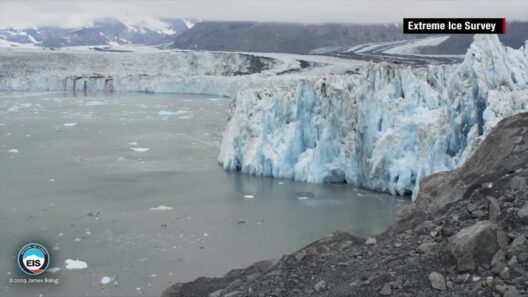In the grand theater of existence, the planet finds itself in a tumultuous act, a pressing crisis that beckons nations to respond with urgency and solidarity. Climate change is not merely a backdrop against which our lives unfold; it is a formidable antagonist that threatens to upend the delicate balance of ecosystems and the very fabric of human society. The response from the global community adopts myriad forms, each a distinct note in a symphony of efforts aimed at mitigating this existential threat.
The Call to Action: International Treaties and Agreements
A cornerstone of the global response to climate change is the emergence of international treaties and agreements, acting as guiding stars in a turbulent sky. The Paris Agreement, instigated in 2015, stands out as a significant milestone, uniting nearly every nation under the common cause of limiting temperature rise to below 2 degrees Celsius. This historic accord operates on a principle akin to a diplomatic handshake, where nations commit to nationally determined contributions (NDCs), pledging to reduce greenhouse gas emissions and advance sustainable practices.
However, the path illuminated by this agreement is not devoid of challenges. Diverse political landscapes and economic disparities present formidable barriers. Developing nations often bear the brunt of climate impacts while possessing limited resources to combat them. Herein lies the necessity of financial mechanisms, such as the Green Climate Fund, designed to disperse capital to assist regions most vulnerable to climate disruptions. This collective investment not only serves humanitarian purposes but also weaves a tighter bond of global unity.
National Paradigms: Varying Strategies and Local Solutions
Nations, akin to distinct characters in a grand narrative, adopt various strategies to address climate change. Each has a unique climate fingerprint, shaped by geography, economy, and culture. For instance, Scandinavian countries have emerged as pioneers in renewable energy. Denmark leads the charge with wind energy, harnessing the power of gales, while Norway fuels its economy with hydropower, showcasing a commitment to sustainable energy sources.
Contrastingly, nations like China, grappling with rapid industrialization, face a monumental task of balancing economic growth with environmental stewardship. The country has invested heavily in solar energy, emerging as a global leader in manufacturing solar panels. This shift towards renewable energy not only serves to mitigate pollution but simultaneously sparks a ripple effect of innovation—a shift away from coal and towards cleaner alternatives.
In the United States, climate response has seen pendulum swings in policy direction, reflecting the political zeitgeist. Some states, like California, have taken bold measures by enacting legislation aimed at reducing emissions and increasing energy efficiency. By mandating stringent fuel economy standards and promoting electric vehicles, these states position themselves as laboratories of democracy, experimenting with solutions that could serve as models for others.
Grassroots Movements: The Power of Collective Action
While the actions of governments are pivotal, the grassroots movements sweeping across the globe represent the heartbeat of climate activism. Engendered by a sense of urgency, advocacy groups mobilize citizens, inspiring them to take decisive action. Events such as climate strikes, initiated by young activists, serve as clarion calls—demanding accountability and igniting conversations about sustainable futures.
The role of social media cannot be underestimated in this burgeoning activism. Platforms like Twitter and Instagram facilitate rapid information sharing, allowing grassroots efforts to transcend borders. Hashtags become vehicles of change, spreading awareness and rallying diverse groups around shared interests. In this age of connectivity, the power of collective action becomes amplified, forging an interconnected network of advocates working towards global climate justice.
Technological Innovations: Shaping the Future
As nations grapple with the repercussions of climate change, technological innovation emerges as a beacon of hope. Innovations in technology facilitate the transition from fossil fuels to greener alternatives. Carbon capture and storage (CCS) technologies, for instance, hold promise in curbing emissions from industrial sources. By capturing carbon dioxide before it enters the atmosphere, CCS offers a dual benefit: reducing climate impact while allowing continued economic activity.
Furthermore, advancements in battery storage technology are transforming the renewable energy landscape. As solar and wind energy become more prevalent, effective energy storage solutions are essential. Enhanced battery technologies enable surplus energy generated during peak production times to be stored and utilized during periods of high demand, thereby addressing intermittency issues and maximizing efficiency.
Cultural Shifts: Redefining Values and Priorities
Ultimately, the fight against climate change transcends policies and technologies; it requires a profound cultural shift in how societies perceive their relationship with the planet. As awareness of environmental degradation grows, a re-evaluation of consumption patterns and lifestyles emerges. The rise of minimalism, sustainable fashion, and plant-based diets illustrates this shift—a clear acknowledgment that every individual’s choices reverberate within the broader tapestry of environmental health.
This change is not only individualistic but resonates within businesses, as corporations are increasingly held accountable for their environmental impact. The adoption of corporate social responsibility (CSR) practices reflects the notion that profitability and sustainability are not mutually exclusive. Companies are now integrating eco-friendly practices into their core operations, recognizing that consumers demand accountability and ethical stewardship.
Conclusion: A Collective Responsibility
As the climate crisis continues to unfold, the global response—a multifaceted and dynamic endeavor—demonstrates that every nation and individual possesses a role in this narrative. Just as threads interweave to create a vibrant tapestry, collective action spans across borders and sectors, embodying a shared commitment to safeguarding our planet. The future rests in our collective hands, where every decision, large or small, contributes to the unfolding legacy we leave for generations to come. It is a poignant reminder: to protect our home is not merely a choice; it is an imperative of our time.






